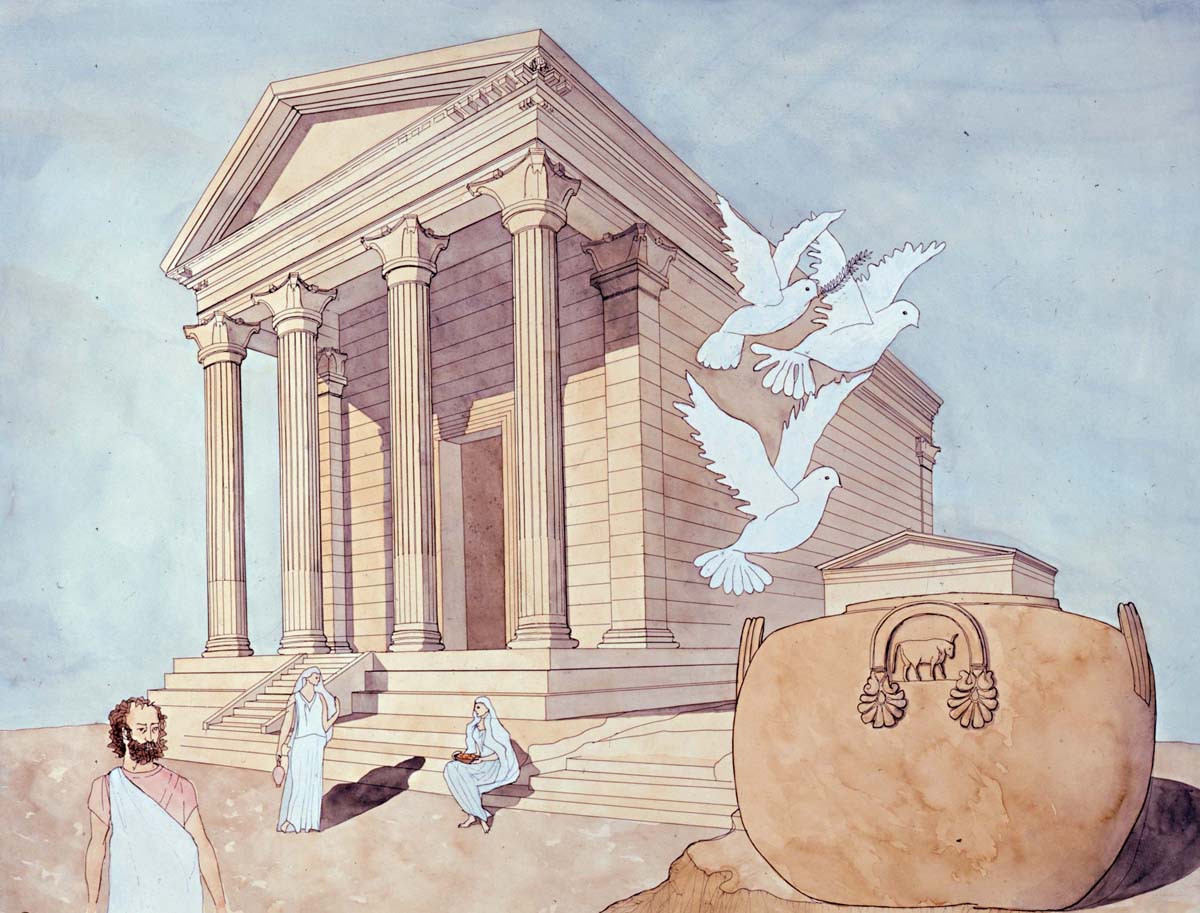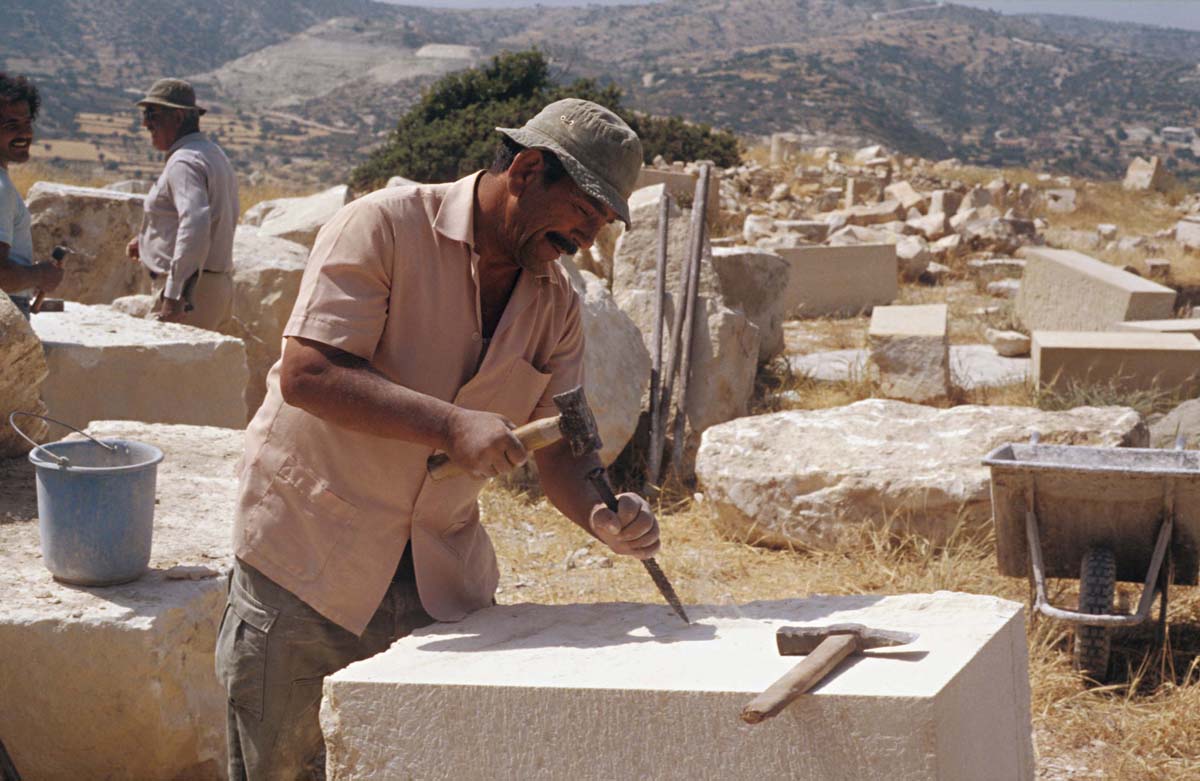Greek-style temples are extremely rare on Cyprus: besides the one at Amathus we actually only know of the temple of Zeus at Salamis and the sanctuary of Apollo Hylates at Kourion. Thanks to the discovery of a small treasury on the wall separating the pronaos and the cella, we know that the construction of the building dedicated to Cypriote Aphrodite started in the last quarter of the first century AD. Built from local limestone, it measures 31, 87 x 15, 12 meters at the first level of the stepped base (krepis or crepidoma), that consisted of three tiers: thus it is not a temple on a podium, the type most common in the Roman imperial period in the eastern Mediterranean. Four columns stood out from the façade, the pilasters jutting out at angles from the walls and towards the back of its long sides; the pediments were not decorated. Nothing remains of the interior fittings and we do not know what could have been the location or the appearance of the statue of the goddess’ cult: it is possible she was evoked, like at Palaepaphos, by a conical stone effigy, a “baetylus”.

Reconstruction of the temple, watercolour (Fl. Babled, M. Schmid / Archives EFA, 23521)
The most noteworthy feature of this somewhat austere architecture – no traces of paint facing were found on the columns or elements of the entablature – is the choice, for the capitals of the façade’s columns and those of the pilasters, of the type known as “Nabatean” (referring to particular capitals from the site of Petra), deriving directly from the Corinthian order of which is not however an unfinished version. Despite the dilapidation suffered, the capitals of Amathus can be qualified as among the most beautiful examples of this category, which most probably originated in Egypt at the end of Hellenistic period or at the beginning of the Imperial period.

Reassembling the crepidoma of the temple, 1987 (A. Hermary / Archives EFA, Y.1069)
The temple was almost entirely demolished towards the end of the 6th century AD: the only thing remaining in place at the time of the excavation was a part of the building’s foundation from the north side that served as a support for the walls of the Christian basilica; the rest of the crepidoma was rebuilt at the end of the 1980s.
A. Hermary, trans. A.M. Schroth-Daskalakis
